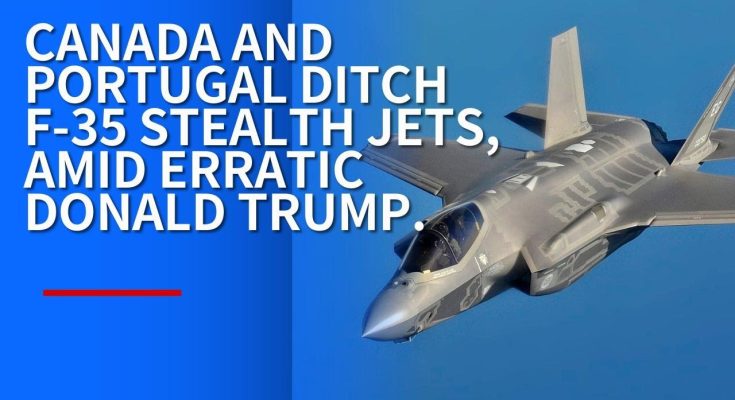Canada and Portugal Ditch Lockheed’s F-35 Stealth Jets Amid Erratic Donald Trump
The F-35 Lightning II was once seen as the ultimate fighter jet for NATO allies, offering stealth, advanced sensors, and unparalleled networked warfare capabilities. However, Canada and Portugal—two key NATO members—are now turning away from the F-35 program, citing concerns over cost, U.S. political instability, and fears of operational dependence on Washington.
One of the biggest factors influencing this decision? The unpredictability of U.S. foreign policy, particularly under Donald Trump, who has repeatedly threatened to undermine NATO, impose economic restrictions on allies, and pressure foreign governments into military deals.
Is the F-35 program losing its global dominance, and could other nations follow Canada and Portugal’s lead?
Canada’s Shaky Commitment to the F-35
Canada has been part of the F-35 development program since the 1990s, but its commitment to actually purchasing the jets has been uncertain for over a decade.
🔹 Political Back-and-Forth: Canada’s leadership has flip-flopped on the F-35 purchase. Former Prime Minister Stephen Harper pushed for the jet, while Justin Trudeau initially campaigned against it, calling it too expensive—only to later approve a $19 billion deal for 88 F-35s in 2022.
🔹 Concerns Over U.S. Reliability: Trump’s frequent attacks on NATO, including claims that the U.S. might not defend certain allies, have raised concerns in Canada about over-relying on American technology.
🔹 Operational Independence Worries: Like other F-35 customers, Canada is concerned that U.S. restrictions on software and maintenance access could limit its ability to operate the jet without Washington’s approval.
🔹 Financial Burden: With ballooning costs in the F-35 program, many in Canada argue that upgrading existing CF-18 Hornets or acquiring a more affordable fighter like the Gripen or Super Hornet would be a better option.
Although Canada has not officially canceled its F-35 order, growing political and financial skepticism means it could still reduce its planned fleet or delay deliveries.
Portugal’s Bold Decision to Reject the F-35
Unlike Canada, Portugal has made a clear decision—it is not buying the F-35.
🔹 Budget Constraints: Portugal has a relatively small defense budget and found the F-35’s $80 million per jet price tag unsustainable.
🔹 No Need for Stealth Capabilities: Portugal’s primary missions include NATO air policing and regional defense, which do not require the F-35’s advanced stealth technology.
🔹 U.S. Foreign Policy Concerns: Trump’s threats to cut NATO funding, reduce U.S. commitments to Europe, and pressure allies into defense deals made Portugal rethink its long-term reliance on American military technology.
🔹 Alternative Fighters Considered: Portugal is now looking at upgraded F-16s, Eurofighter Typhoons, or Gripens, which offer strong multirole capabilities at a fraction of the F-35’s cost.
Portugal’s rejection of the F-35 is a warning sign that smaller NATO nations may be wary of becoming too dependent on the U.S. for their military capabilities.
Trump’s Influence on F-35 Sales & NATO Relations
The F-35 has become not just a fighter jet but a tool of U.S. foreign policy.
✅ Unpredictable U.S. Leadership: Trump’s erratic foreign policy has made allies nervous, leading them to diversify their military options rather than rely on U.S. aircraft.
✅ Financial Pressure on NATO: Trump repeatedly demanded that NATO allies spend more on defense, but many countries see the F-35 as an overpriced and politically risky option.
✅ Alternative European Fighter Programs: With France, Germany, and Spain developing the Future Combat Air System (FCAS) and the UK and Italy working on the Tempest fighter, NATO countries now have European-made alternatives to the F-35.



